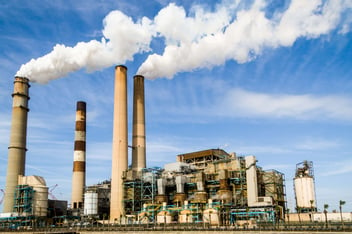Welcome to our first Inspectahire Industry Insights where this month we focus on the Oil & Gas Industry.
We spoke to Cailean Forrester our Managing Director here at Inspectahire who, with more than three decades of experience, is ideally placed to provide some expert insights into Oil & Gas Inspection Services in addition to the wider Oil & Gas market.
Below is a condensed version of our discussion, covering some of our key takeaways.
What does this industry mean to your business?
The industry maintains the asset integrity of all the plant and equipment that it’s operating on and offshore. The requirements for maintaining these assets can be driven by a number of factors:
Regulatory compliance National requirements Certification bodies Insurance companies
All of these people have their own specific requirements with a further layer of complexity being added by these requirements often being different, dependant on whether the asset is on or offshore.
The final reason for doing this (inspections) is production efficiencies, so to maximise the return they are getting from their asset. As things deteriorate, they need to be inspected to understand what is happening and determine if things can be improved.
Who in the industry might use your services?
Major Oil & Gas operators will all have an internal capability to do inspections however they will also regularly sub-contract some of this work. This means that there are a multitude of companies who will use services and equipment such as that supplied by Inspectahire. We can work directly with an operator or through one of their service companies.
What changes do you expect to see in this industry over the next few years?
A key element to the Oil & Gas industry is maintaining health and safety and trying not to put people at risk. There is a desire to introduce more modern ways of doing things, including introducing new technologies, however it needs to be remembered that many of these assets are decades old, located in very hostile environments and being modified regularly, therefore it can be very difficult to apply new technologies.
Historically machinery has also required ATEX certification and when operating in hazardous conditions this can be very expensive. This means that whilst there will be more remote inspection and monitoring, the requirement for human involvement will be around for a very long time. This then drives the need to create more certified courses that will provide people with the necessary skills to operate safely and effectively within these fields.
What is ATEX?
ATEX is the certification that is given to equipment that is used in mining and other hazardous areas to infer that it is safe and satisfactory to use. There are different levels of certification available and the equipment needs to be appropriate to the environment within which it will be used, just having an ATEX certificate does not mean it is safe to use.
Cailean’s comments
My background is one of consultancy and working across a number of industries from civil engineering to aerospace and nuclear. All of those industries have void spaces and the company has developed by providing remote visual inspection expertise, technology and instruments, to industry to stop putting people at risk. There will be more use of technology moving forward, evidence of this being that our Health and Safety Executive, as of September 2019, are starting a consultation with industry, looking at what standards can be put in place and what equipment should be used when undertaking remote visual inspections. This for me is recognition of the regulator, after 30 years, trying to catch up with where technology is moving and this will have a big impact on every industry.
Cailean’s quote
I am in the fortunate position of running an industrial ‘Toys R Us’!



